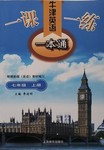题目内容
Robert Spring, a 19th century forger (伪造签字者), was as good at his profession that he was able to make his living for 15 years by selling false signatures of famous Americans. Spring was born in England in 1813 and arrived in Philadelphia in 1858 to open a bookstore. At first he make some money by selling his small but genuine of early U.S. autographs (亲笔签字). Discovering his ability at copying handwriting, he began imitating signatures of George Washington and Ban Franklin and writing them on the title pages of old books. To make less the chance of detection (发觉), he sent his forgeries (伪造物) to England and Canada for sale and circulation (销售).
Forgers have a hard time selling their products. A forger can't approach a respectable buyer but must deal with people who don't have much knowledge in the field. Forgers have many ways to make their work look real. For example, they buy old books to use the aged paper of the title page, and they can treat paper and ink with chemicals.
In Spring's time, right after the Civil War, Britain was still fond of the Southern states, so Spring invented a respectable maiden lady known as Miss Fanny Jackson, the only daughter of General "Stonewall" Jackson. For several years Miss Fanny's economic problems forced her to sell a great number of letters and manuscripts belonging to her famous father. Spring had to work very hard to satisfy the demand. All this activity did not prevent Spring from dying in poverty, leaving sharp-eye experts the difficult task of separating this forgeries from the originals
- 1.
Why did Spring sell his autographs in England and Canada?
- A.There was a greater demand there than in America
- B.There was less chance of being detected there
- C.Britain was Spring's birthplace
- D.The price were higher in England and Canada
- A.
- 2.
After the Civil War, there was a great demand in Britain for _______
- A.Southern money
- B.signatures of George Washington and Ben Franklin
- C.Southern manuscripts and letters
- D.Civil War battle plans
- A.
- 3.
Robert Spring spent 15 years _______
- A.running a bookstore in Philadelphia
- B.corresponding with Miss Fanny Jackson
- C.as a forger
- D.as a respectable dealer
- A.
- 4.
According to the passage, forgeries are usually sold to _______
- A.sharp-eyed experts
- B.persons who aren't experts
- C.book dealers
- D.owner of the old books
- A.
- 5.
Who was Miss Fanny Jackson?
- A.The only daughter of General "Stonewall" Jackson
- B.A little-known girl who sold her father's papers to Robert Spring
- C.Robert Spring's daughter
- D.An imaginary person created by Spring
- A.
BCCBD
试题分析:本文介绍Robert Spring擅长模仿别人的笔迹,并靠这个谋生的事情。
1.细节题。根据第一段最后两行To make less the chance of detection (发觉), he sent his forgeries (伪造物) to England and Canada for sale and circulation (销售).说明他这样做的目的是不让自己被发现。故B正确。
2.推理题。根据第一段5,6行he began imitating signatures of George Washington and Ban Franklin and writing them on the title pages of old books.说明他模仿的主要是华盛顿和富兰克林的笔迹。这也说明这两个人的签名很受欢迎。故C正确。
3.细节题。根据第一段第三行he was able to make his living for 15 years by selling false signatures of famous Americans.说明C正确。
4.常识题。他买的实际上是假货,上当的都是那些不懂行的人或者是一些对这些方面的知识所知很少的人。故B正确。
5.细节题。根据最后一段2,3行so Spring invented a respectable maiden lady known as Miss Fanny Jackson, the only daughter of General "Stonewall" Jackson.说明Miss Fanny Jackson是他想象出来的,故D正确。
考点:考查人物传记类短文
点评:这篇文章考查推理题和句意理解,题目要我们理解有些重点的句子。要求考生有较强的细节理解能力,也要考生具备一定的常识。
试题分析:本文介绍Robert Spring擅长模仿别人的笔迹,并靠这个谋生的事情。
1.细节题。根据第一段最后两行To make less the chance of detection (发觉), he sent his forgeries (伪造物) to England and Canada for sale and circulation (销售).说明他这样做的目的是不让自己被发现。故B正确。
2.推理题。根据第一段5,6行he began imitating signatures of George Washington and Ban Franklin and writing them on the title pages of old books.说明他模仿的主要是华盛顿和富兰克林的笔迹。这也说明这两个人的签名很受欢迎。故C正确。
3.细节题。根据第一段第三行he was able to make his living for 15 years by selling false signatures of famous Americans.说明C正确。
4.常识题。他买的实际上是假货,上当的都是那些不懂行的人或者是一些对这些方面的知识所知很少的人。故B正确。
5.细节题。根据最后一段2,3行so Spring invented a respectable maiden lady known as Miss Fanny Jackson, the only daughter of General "Stonewall" Jackson.说明Miss Fanny Jackson是他想象出来的,故D正确。
考点:考查人物传记类短文
点评:这篇文章考查推理题和句意理解,题目要我们理解有些重点的句子。要求考生有较强的细节理解能力,也要考生具备一定的常识。

练习册系列答案
 课时掌控随堂练习系列答案
课时掌控随堂练习系列答案 一课一练一本通系列答案
一课一练一本通系列答案 浙江之星学业水平测试系列答案
浙江之星学业水平测试系列答案
相关题目